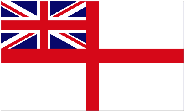
October 39 - April 40: South Atlantic Station
May 40 - June 41: Freetown Escort Force
July 41 - April 42: South Atlantic Station
May 42: Western Patrol
June 42 - April 43: South Atlantic Station
May 43 - November 43: West Africa Command
Bellringer' was a British naval sub-operation within 'Ration' to intercept a lightly escorted Vichy French convoy in the Atlantic Ocean to the south of the Cape of Good Hope (1/2 November 1941).
The British ships involved in this undertaking were the heavy cruiser Devonshire, the light cruiser Colombo and the armed merchant cruisers Carnavon Castle and Carthage.
The operation located the Vichy French convoy, on passage from French Indo-China via Madagascar to France, in a position to the east of the Cape of Good Hope, and captured all five of the merchant vessels.
These were the 8,056-ton freighter Bangkok, 5,529-ton freighter Commandant Dorise, 9,986-ton liner Compiègne, 8,009-ton liner Cap Touraine and 8,009-ton liner Cap Padaran.
The convoy was escorted only by the sloop D’Iberville, which was able to withdraw unmolested.
Among the cargo items thus seized by the British were 900 tons of graphite and 30,000 tons of rice.
Her crew immobilised Cap Padaran, which was taken in tow by Carthage, escorted by the minesweeping whaler Stellenberg, and taken to Port Elizabeth.
Her crew set Bangkok on fire and abandoned the ship, Colombo and Stellenberg then recovering the crew.
The other three Vichy French vessels were taken to South African ports: Devonshire and the minesweeping whaler Steenberg escorted Cap Touraine to Port Elizabeth; Carnarvon Castle and the minesweeping whaler Gun 9 escorted Commandant Dorise to East London; and Colombo and the minesweeping whaler Nigel escorted Compiègne to East London.
The South African minesweeping whalers Southern Barrier and Terje supported the operation.
In response, the Vichy French admiralty ordered the submarines Glorieux and Héros, which were on passage to Madagascar, to attack British shipping. Héros accordingly sank the 5,757-ton Norwegian freighter Thode Fagelund on 17 November.
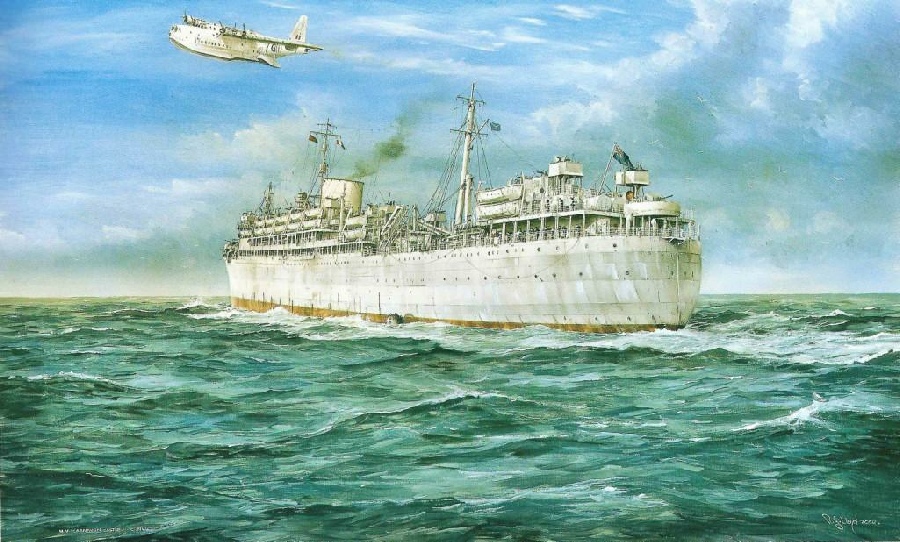
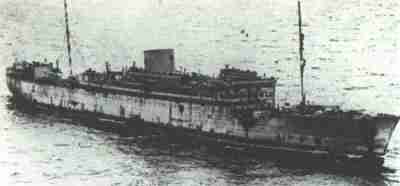
Arriving in Montevideo after her encounter with the raider Thor
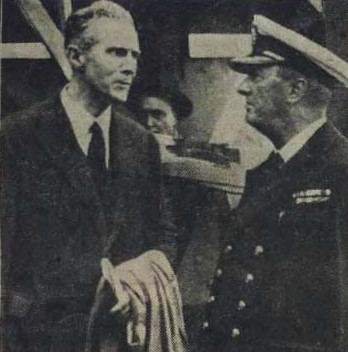


HMA Carnarvon Castle - Art Gallery
Captains |
From
|
To
|
|
G B Lewis RN
Captain
|
8/1939
|
5/1940
|
|
M J de Meric RN
Captain
|
5/1940
|
5/1940
|
|
H N Hardy RN
Captain
|
5/1940
|
4/1942
|
|
E W Kitson RN
Captain
|
4/1942
|
12/1943
|
Career Summary
HMS Carnarvon Castle
Pennant F25

|
Vessel
|
Built
|
Tonnage
|
Official No
|
Ship Builder
|
Engine Builder
|
Engine Type
|
HP
|
Screws
|
Speed
|
|
HMS Carnarvon Castle
|
1926
|
20122
|
102670
|
Harland & Wolff
Belfast
|
2 x Motor 10 Cyl
Burmeister & Wain
|
26000 BHP
|
2
|
19
|
The Action with German Raider Thor - 1940


On 5 December HMS Carnarvon Castle encountered the German auxiliary cruiser Thor and had a five-hour running battle with her.
She suffered heavily in the battle, sustaining 27 hits causing 4 dead and 27 wounded.
Thor was apparently undamaged in the encounter.
Carnarvon Castle put into Montevideo for repairs, and was repaired with steel plate reportedly salvaged from the German cruiser Admiral Graf Spee.
Operation Bellringer - 1941




Bangkok
Placed under Clan Line Management
Compeigne
Placed under Union-Castle Management

RMMV Carnarvon Castle was at Cape Town at the outbreak of the Second World War, and was requisitioned by the Royal Navy on 8 September 1939.
She sailed to the naval base at Simonstown and was converted to an armed merchant cruiser. Commissioned as HMS Carnarvon Castle on 9 October, she sailed into the South Atlantic.
Carnarvon Castle's career as an armed merchant cruiser came to an end when she was decommissioned in December 1943. There were plans to convert her into an aircraft carrier, but these were abandoned and she underwent a conversion to a troopship at New York City in 1944.
She remained on trooping duties after the war, and was finally released from naval service in March 1947.
Returned to her original owners, she was back on the route to South Africa by June 1947.
With her trooping accommodation only marginally upgraded, she carried a flood of post war emigrants from Britain on low cost assisted passages to East and South Africa.
She was again refitted, to more luxurious standards, by Harland and Wolff in early 1949.
Resuming service on 15 June 1950, she served until her retirement and sale.
Refit at Newport News - 1941


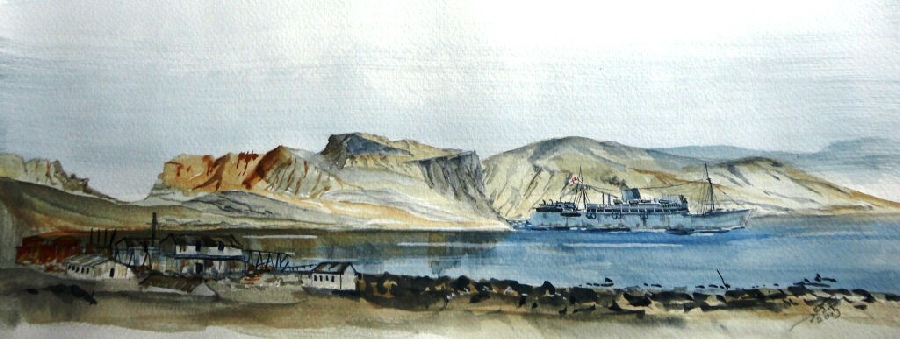
HMS Carnarvon Castle
Armed Merchant Cruiser
Artist - Robert Lloyd
HMS Carnarvon Castle
Emerging from Neptune's Bellows at Deception Island in the South Shetland Islands Jan 1943.
The remains of the old Whaling Station are on the left
Small watercolour 14 x 4 inches.
By Jim Rae

